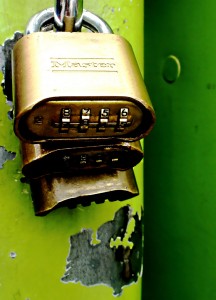Though Neal Stevenson’s novel Cryptonomicon is fictional, its story of cryptography geniuses Lawrence Waterhouse, Alan Turing and Rudy von Hacklheber during World War II gives a very accurate account of the processes and drama experienced by these experts in their field. World War II fueled one of the greatest transformations in cryptography, and these three men were at the head of the changes. Cipher analysis had always been based off of knowledge of language, pattern recognition and frequency analysis, but Waterhouse, Turing and von Hacklheber shifted the focus away from language analysis and toward mathematical analysis.
In one of the turning points of the novel and cryptography history, Waterhouse discovers non-Enigma messages in the German U-boat U-553 that have stumped his analysts. After further examination, Waterhouse discovers that the code is made of a 32 letter alphabet. This number is significant because it is a power of two, meaning that each letter in the alphabet was first substituted by a number and then by a five character binary sequence. This type of code is called the Baudot code and was used by the Germans on teletype machines. The teletype machines converted 32 characters into five number sequences of 1’s and 0’s. These could then be represented by either holes or no holes on a strip of paper or could be transmitted by wire or radio through changes in electrical voltages to represent the 1 or 0.
By encrypting the Baudot code again through one time pads, the Germans further increased their security. What the Germans failed to realize was that their “random” one time pads were generated through an algorithm and where therefore only “pseudo-random.” Though truly random one-time pads are impossible to crack, Turing and Waterhouse were able to design a precursor to the modern computer called Colossus that could find the weakness in the one-time pads.
Turing and Waterhouse’s transformation from using frequency analysis to using formulas and computers to decipher a message marks a sudden change in cryptography history. Turing’s first computers and the use of binary to encode messages would forever change the standard methods of cryptography. No longer was cryptography power based on weak letter based codes, but rather almost unbreakably powerful number based codes that would revolutionize cryptography less than a century later with public key encryption.










